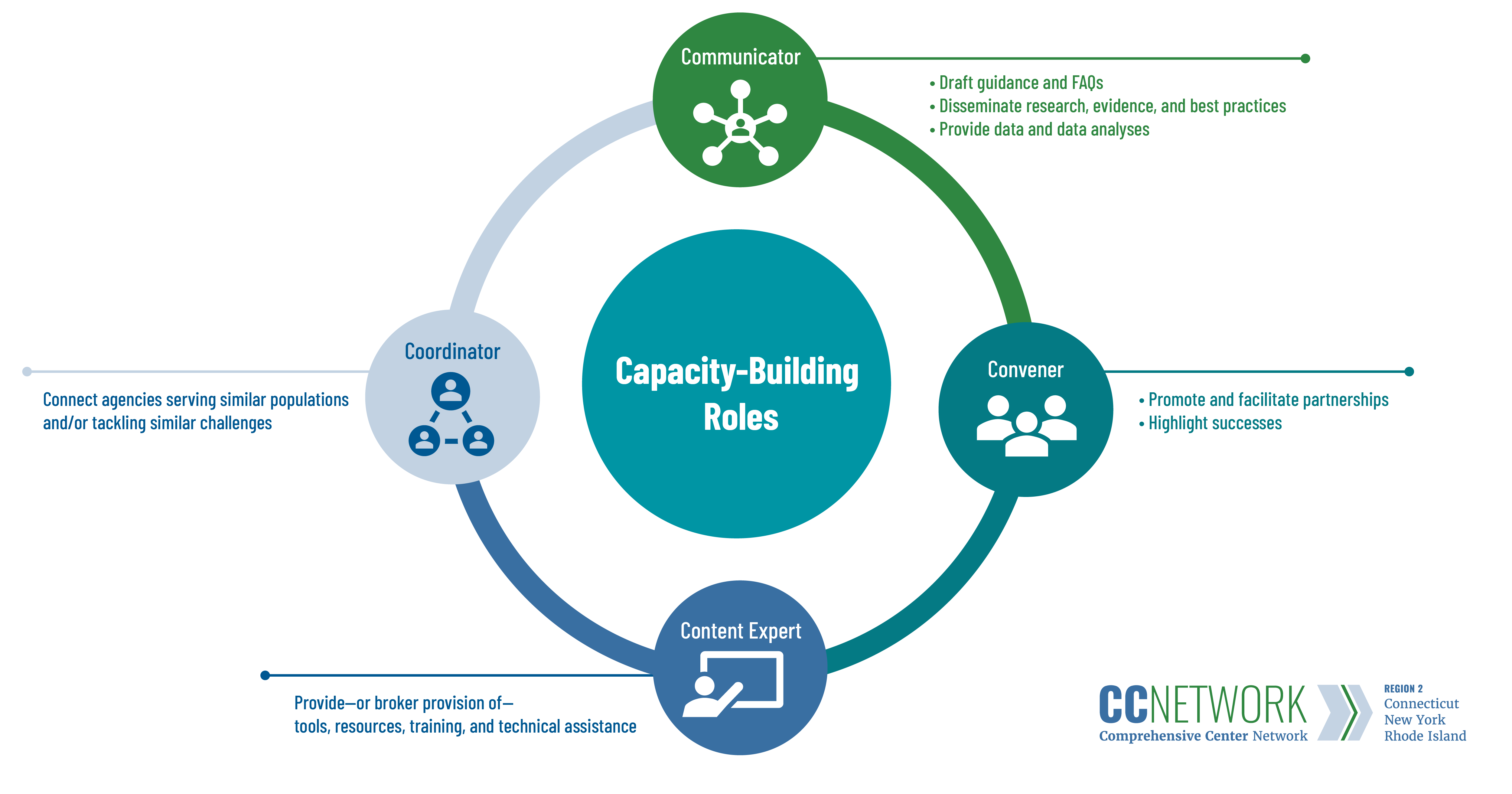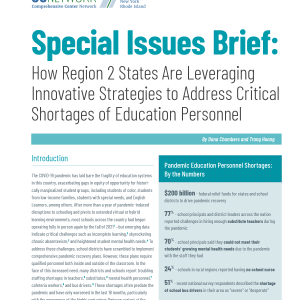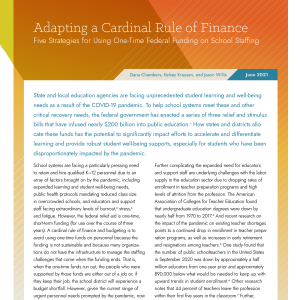How States Are Building District Capacity to Overcome Teacher Shortages (Part II)
Posted on

Learn what state education agencies in Arizona, Connecticut, and Rhode Island, are doing to increase the ability of their school districts to effectively recruit and retain teachers, particularly teachers of color and those in rural areas.
Last month, the blog post How States Are Building District Capacity to Overcome Teacher Shortages provided examples of state education agencies (SEAs) serving as “Conveners of Groups of Districts with Common Needs” and “Communicators of Mission-Critical Data.” These categories comprise the first two of the “4 Cs”—technical assistance roles played by states in partnership with Regional Comprehensive Centers 2 and 15—and approaches that SEAs nationwide could consider. In this next post in the series, we provide examples of SEAs serving as “Content Experts”—the third “4C” category.

Content Experts
Arizona State University is working to expand the use of a distributive leadership model developed in the state. In “Next Educator Workforce” models—which recently received national attention—teams of educators share a common roster of students. When this happens, new teachers, who can be teamed with more veteran teachers, are no longer responsible for the same set of responsibilities as experienced teachers on their first day. This distributed team-teaching approach is attractive to teacher recruits because new teachers no longer operate in isolation, instead working alongside senior teachers who take the lead. The model has been shown to increase teacher satisfaction while simultaneously giving students the benefit of learning from teachers with a range of experience and expertise. To help districts in Arizona optimize skill sets across such teams, the Region 15 Comprehensive Center conducted a national literature scan of teacher leadership standards and competencies that it will use to align with the Arizona Department of Education’s new Teacher Leadership Standards. The goal is to create better working conditions that encourage more new teachers to enter the classroom, and build robust advancement pathways for experienced teachers, all to better serve students. Learn more about this model in The Case for Differentiated Staffing in the Classroom.
The Connecticut State Department of Education is supporting its districts as they develop new approaches to recruiting and sustaining educators of color. With help from the Region 2 Comprehensive Center (R2CC) and Regional Educational Laboratory Northeast and Islands, the Connecticut State Department of Education (CSDE) conducted a pilot between 2020-2021 giving districts the opportunity to apply the research-based guidebook Creating a District Plan to Increase the Racial, Ethnic, and Linguistic Diversity of Your Educator Workforce (CSDE, 2019). Using feedback from the pilot, CSDE developed a supplemental toolkit, Creating an Action Plan and Sustaining Efforts to Increase Educator Diversity (CSDE, 2022). The toolkit expands upon proven strategies like engaging in self-assessment, exploring root causes, undergoing data analysis processes, and having difficult conversations (which WestEd’s Saroja Warner addresses in Going Beyond the Data in Diversifying the Teacher Workforce) to help districts with planning and implementation. Both the guidebook and toolkit are available to all districts, but to increase the likelihood of success, the R2CC also built regional educational service centers’ (RESCs) capacity through a train-the-trainer model, enabling them to coach additional districts. Now, a new central Educator Diversity Dashboard allows districts to track their progress relative to the state as a whole and to each other, and the state is closely monitoring preliminary outcomes. A promising early sign is that the percentage of educators of color working in schools has increased to 11.2 percent in 2022-2023, up from 8.3 percent in 2015-2016, an increase of 1,649 teachers of color. Learn more in Preparing Connecticut’s State and District Leaders to Recruit and Sustain Educators of Color.
Rhode Island is developing anti-bias recruitment and hiring guidance to ensure broader access to its teacher workforce pathways. The guidance will support local education agencies in creating action plans for hiring and selecting high-quality teachers while increasing educator diversity by reducing biases in hiring processes. To guide Rhode Island’s work, the R2CC compiled and synthesized recent research and evidence produced by leading organizations in the field regarding pathways, preparation, certification, professional learning, evaluation, and leadership. The repository includes information on the factors that most affect recruitment and retention, efforts by other states, recommended actions by leading national organizations in the field, evidence-based strategies, innovations, and reflections of districts in national surveys.
For additional state and comprehensive center partnership efforts to tackle the teacher shortage, visit the National Comprehensive Center “Educator Workforce” highlights.
The Regions 2 and 15 Comprehensive Centers work with SEAs and their regional and local constituents in Arizona, California, Connecticut, Nevada, New York, Rhode Island, and Utah to improve outcomes for all children and better serve communities through capacity-building technical assistance, content expertise, and other services.
The contents of this blog post were developed under a grant from the Department of Education. However, the contents do not necessarily represent the policy of the Department of Education, and you should not assume endorsement by the federal government.


